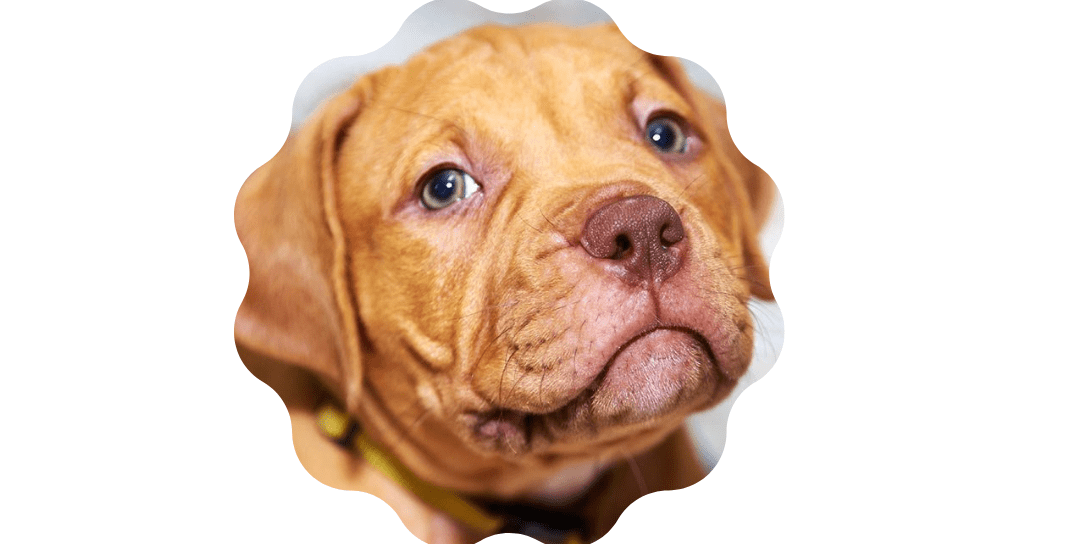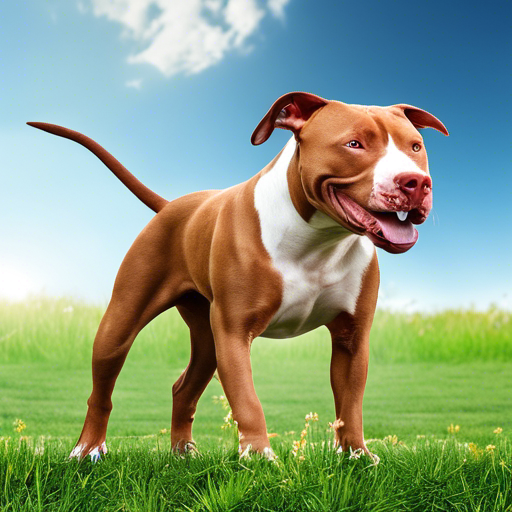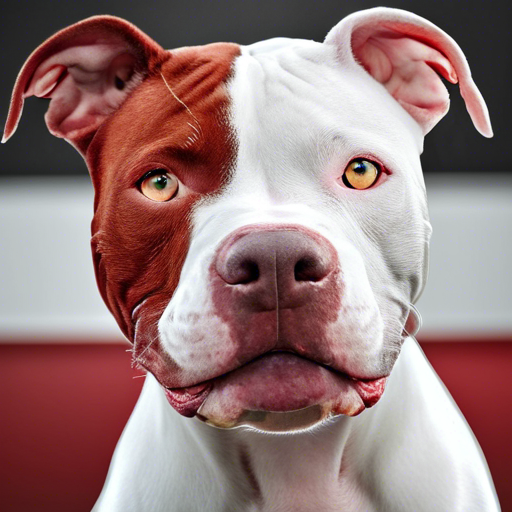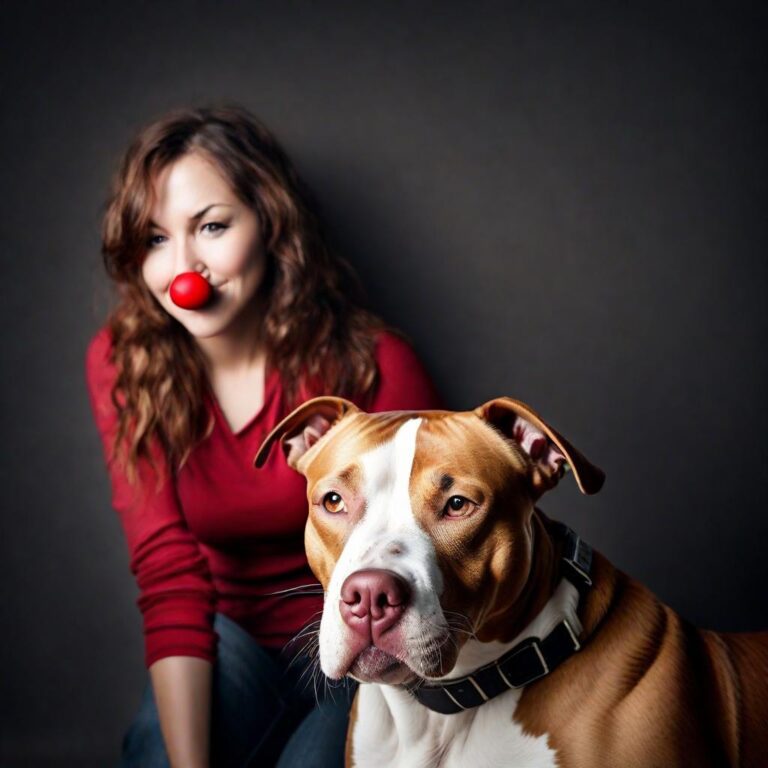History and Origin of the American Red Nose Pitbull
The history of the American Red Nose Pitbull traces back to the early 19th century in the United States. Descended from the Old English Bulldogs and Terriers, these dogs were originally bred for various tasks, including bull-baiting and as farm dogs. Over time, they transitioned into loyal companions and working dogs, renowned for their strength, agility, and courage.
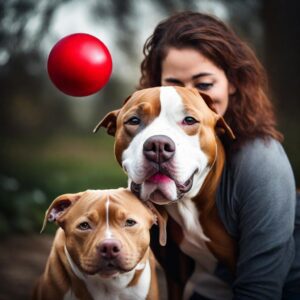
Physical Characteristics
Body Structure
The American Red Nose Pitbull is a medium-sized, muscular dog with a powerful build. They exhibit a broad chest, strong legs, and a distinctively broad head.
Coat Color and Texture
As the name suggests, one of the distinguishing features of the American Red Nose Pitbull is its reddish nose. Their coat comes in various colors, including red, fawn, blue, black, and brindle. The coat is short, sleek, and easy to maintain.
Facial Features
With their soulful eyes and characteristic smile, Red Nose Pitbulls have a friendly and approachable expression. Their ears are typically cropped, though this practice is becoming less common.
Temperament and Behavior
Red Nose Pitbulls are renowned for their loyalty, affection, and intelligence. They form strong bonds with their families and are known to be excellent with children when properly socialized. These dogs thrive on human companionship and are eager to please their owners.
Care and Maintenance
Exercise Needs
Like all dogs, Red Nose Pitbulls require regular exercise to stay healthy and happy. Daily walks, playtime, and interactive toys are essential to fulfill their physical and mental stimulation needs.
Grooming Requirements
Fortunately, the Red Nose Pitbull’s short coat requires minimal grooming. Weekly brushing and occasional baths are usually sufficient to keep their coat clean and healthy.
Dietary Considerations
A balanced diet is crucial for the overall well-being of Red Nose Pitbulls. High-quality dog food tailored to their age, size, and activity level is recommended. It’s essential to monitor their weight and adjust their diet accordingly to prevent obesity.
Health Concerns
While generally a robust and healthy breed, Red Nose Pitbulls may be prone to certain health issues, including hip dysplasia, skin allergies, and heart disease. Regular veterinary check-ups, vaccinations, and preventive care are essential to ensure their long-term health.
Training Tips
Positive reinforcement training methods work best for Red Nose Pitbulls. They respond well to praise, treats, and consistency. Early socialization is crucial to help them develop into well-mannered and well-adjusted adults.
Legal Considerations and Stereotypes
Sadly, Red Nose Pitbulls often face discrimination due to misconceptions surrounding the breed. Breed-specific legislation (BSL) in some areas may restrict or even ban ownership of these dogs. It’s essential to advocate for responsible ownership and educate others about the true nature of Red Nose Pitbulls.
American Red Nose Pitbull in Popular Culture
Red Nose Pitbulls have made their mark in popular culture, appearing in films, television shows, and even as beloved pets of celebrities. Their portrayal has helped to challenge stereotypes and showcase their loving and loyal nature.
Conclusion
In conclusion, the American Red Nose Pitbull is a remarkable breed known for its loyalty, affection, and intelligence. With proper care, training, and socialization, they make wonderful companions for individuals and families alike.
The American Red Nose Pitbull, often simply referred to as the Red Nose Pitbull, is a beloved and misunderstood breed. Known for its striking appearance and loyal nature, these dogs have captured the hearts of many. In this article, we’ll delve into the history, characteristics, temperament, care needs, and more surrounding this fascinating breed.
History and Origin of the American Red Nose Pitbull
The history of the American Red Nose Pitbull traces back to the early 19th century in the United States. Descended from the Old English Bulldogs and Terriers, these dogs were originally bred for various tasks, including bull-baiting and as farm dogs. Over time, they transitioned into loyal companions and working dogs, renowned for their strength, agility, and courage.
Physical Characteristics
Body Structure
The American Red Nose Pitbull is a medium-sized, muscular dog with a powerful build. They exhibit a broad chest, strong legs, and a distinctively broad head.
Coat Color and Texture
As the name suggests, one of the distinguishing features of the American Red Nose Pitbull is its reddish nose. Their coat comes in various colors, including red, fawn, blue, black, and brindle. The coat is short, sleek, and easy to maintain.
Facial Features
With their soulful eyes and characteristic smile, Red Nose Pitbulls have a friendly and approachable expression. Their ears are typically cropped, though this practice is becoming less common.
Temperament and Behavior
Red Nose Pitbulls are renowned for their loyalty, affection, and intelligence. They form strong bonds with their families and are known to be excellent with children when properly socialized. These dogs thrive on human companionship and are eager to please their owners.
Care and Maintenance
Exercise Needs
Like all dogs, Red Nose Pitbulls require regular exercise to stay healthy and happy. Daily walks, playtime, and interactive toys are essential to fulfill their physical and mental stimulation needs.
Grooming Requirements
Fortunately, the Red Nose Pitbull’s short coat requires minimal grooming. Weekly brushing and occasional baths are usually sufficient to keep their coat clean and healthy.
Dietary Considerations
A balanced diet is crucial for the overall well-being of Red Nose Pitbulls. High-quality dog food tailored to their age, size, and activity level is recommended. It’s essential to monitor their weight and adjust their diet accordingly to prevent obesity.
Health Concerns
While generally a robust and healthy breed, Red Nose Pitbulls may be prone to certain health issues, including hip dysplasia, skin allergies, and heart disease. Regular veterinary check-ups, vaccinations, and preventive care are essential to ensure their long-term health.
Training Tips
Positive reinforcement training methods work best for Red Nose Pitbulls. They respond well to praise, treats, and consistency. Early socialization is crucial to help them develop into well-mannered and well-adjusted adults.
Legal Considerations and Stereotypes
Sadly, Red Nose Pitbulls often face discrimination due to misconceptions surrounding the breed. Breed-specific legislation (BSL) in some areas may restrict or even ban ownership of these dogs. It’s essential to advocate for responsible ownership and educate others about the true nature of Red Nose Pitbulls.
American Red Nose Pitbull in Popular Culture
Red Nose Pitbulls have made their mark in popular culture, appearing in films, television shows, and even as beloved pets of celebrities. Their portrayal has helped to challenge stereotypes and showcase their loving and loyal nature.
Conclusion
In conclusion, the American Red Nose Pitbull is a remarkable breed known for its loyalty, affection, and intelligence. With proper care, training, and socialization, they make wonderful companions for individuals and families alike.
Frequently Asked Questions (FAQs)
Are Red Nose Pitbulls aggressive?
Red Nose Pitbulls are not inherently aggressive. Like any dog, their behavior is influenced by factors such as genetics, upbringing, and training.
Do Red Nose Pitbulls require a lot of exercise?
Yes, Red Nose Pitbulls are active dogs that require regular exercise to stay healthy and happy. Daily walks and playtime are essential to meet their exercise needs.
Are Red Nose Pitbulls good with children?
When properly socialized and trained, Red Nose Pitbulls can be excellent with children. They are known for their affectionate nature and often form strong bonds with family members, including children.
Do Red Nose Pitbulls have any specific dietary requirements?
Red Nose Pitbulls require a balanced diet tailored to their age, size, and activity level. High-quality dog food and regular feeding schedules are essential for their health and well-being.
Are Red Nose Pitbulls legal to own everywhere?
Laws regarding ownership of Red Nose Pitbulls vary by location. Some areas may have breed-specific legislation (BSL) restricting or banning ownership of certain breeds, including Pitbulls. It’s important to check local regulations before acquiring a Red Nose Pitbull as a pet.
